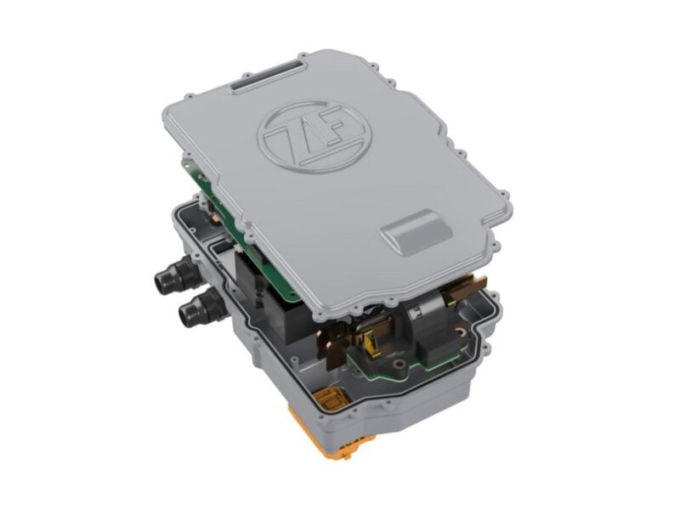German automotive supplier ZF has launched a modular powertrain for electric vehicles with an AI-enhanced controller that boosts efficiency and reduces size.
The SELECT platform integrates four elements, from a range of different types of electric motor and transmission to the inverter and AI-enhanced control software to reduce the size by almost 20% and the weight by 15%.
“A lot of people think it is ok to optimise a single component such as a motor but that is not the case. If you just optimise one piece you miss out on the global optimisation and you have lower efficiency,” said Dr Otmar Scharrer, Senior Vice President R&D, Electrified Powertrain Technology at ZF.
“SELECT is the result of that optimisation. It’s a platform with four parts. The reducer is the transmission which you definitely need in an EV as the motor runs faster than the wheels, and that needs a ratio of between 1:10 and 1:12. Then we have the electric machine, the motor, and the inverter and the software that is the brains of the system.”
This supports up to 93% efficiency with peak power from 150kW to 300kW and torque from 3500Nm to 5500Nm. “Within the range you can select performance points without additional validation, which speeds up development, he said.
The volume of 66l is a reduction of 19%, while the weight of 89kg is a 15% reduction compared to a best in class Chinese system launched late last year, he says.
- ZF starts series production of steer-by-wire technology
The 300kW in:SELECT inverter supports both 800V and 400V systems. “We will launch the all new 300kW inverter platform next year with a premium customer and this is the size of a piece of paper. Five years ago this would have been 4x larger. It can be scaled up and down without losing features with the same software platform. Previously if you changed the power modules you had to change the software which is expensive and risky,” he said.
AI software
The sw:SELECT software uses two cores, one with the application software and the second one for drivers with dedicated customer interfaces. “We do not change the base core but change the parameters and use the pre-defined interface to communicate to the customer system,” said Scharrer.
“There is a lot of AI in the software. One of the key factors is the temperature, as this derates the drivetrain. You need to identify the hottest spots in the drivetrain so we have an AI system that estimates the maximum temperature on the hottest spots. This needs to be customised to the environment, and this can be done fully automatically in a matter of hours. This allows us to go much closer to the limits of the drivetrain,” he added.
The em:SELECT for the electric motors in the powertrain covers both proven PSM (Permanently Excited Synchronous Machines) and ASM (Asynchronous Machines) through to new SESM concepts (Separately Excited Synchronous Machines) that does not need magnets that use rare earth elements (REEs). This avoids supply chain issues with REEs from China.
The fourth element in the powertrain is rd:SELECT as the reducer, or transmission, system which can be parallel axis or coaxial.



Leave a comment